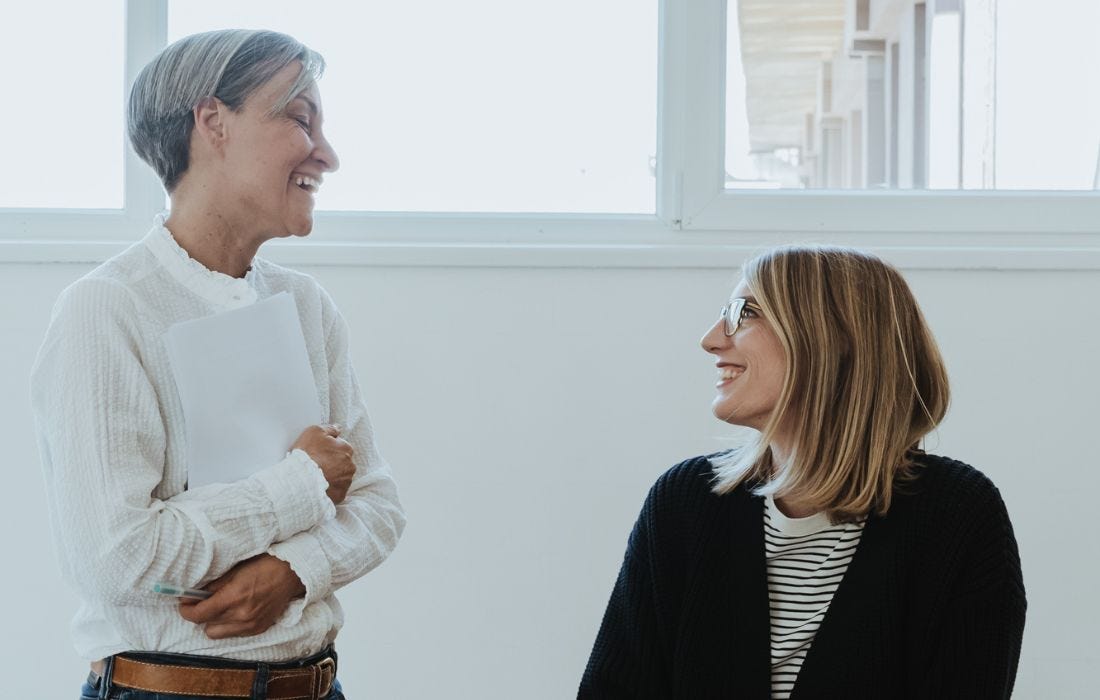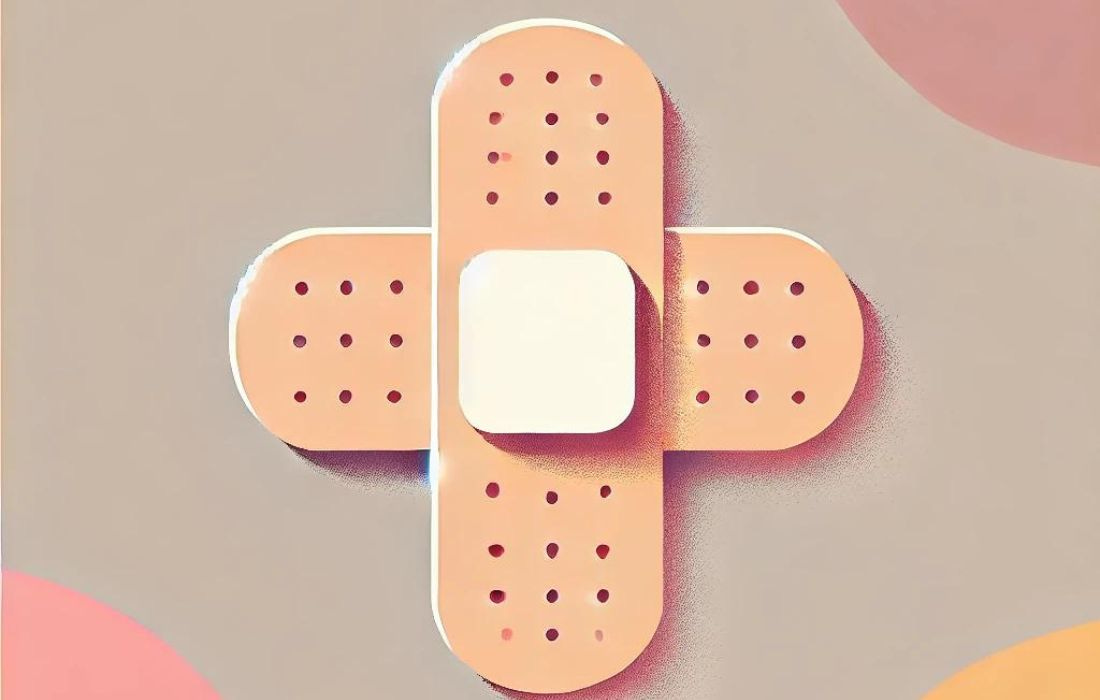Partnering up
Six tips for successful collaborations with fellow independents. From aligning priorities to addressing challenges.
I’ve been thinking a lot about collaboration lately—especially for those of us working in the climate and social impact space. There’s something incredibly powerful about partnering up with other freelancers and independents. Not only does it lighten the load, but it also opens up the possibility of tackling bigger, more impactful projects together.

Especially in the impact space, much of what we do involves education, leading thought-provoking discussions, and showing why our efforts matter. We’re often building the field as we go, which can be a heavy lift. That’s where collaboration comes in. By partnering up with other independents, we can multiply our impact.
But let’s be real—collaborating isn’t always easy. When you’re independent, you’re not part of a team or company that ‘demands’ collaboration. Instead, you have to want to spend time together, and that takes a certain level of dedication. Life and work can get in the way, priorities shift, and it’s easy for things to fall apart if you’re not intentional about making it work. This can be a big challenge to overcome.
Someone once told me that out of every five potential collaborations, only two will work out. That statistic stuck with me. So, what should we be looking out for when deciding who to partner up with and how to build a strong collaboration?
Here are a few things I’ve found to be crucial:
1. Complementary skills
Do your skills complement each other? Can you work together without stepping on each other’s toes? It’s important to find someone whose strengths balance out your weaknesses. The best collaborations often happen when both partners bring something unique to the table.
Example: One person likes to present and talk about ideas, while the other is great at organising projects and tasks.
2. Priorities and urgency
Are you both on the same page when it comes to priorities? Some people might want to push something out quickly, while others see the collaboration as a slow-burn side project. Alignment on expectations can make or break the partnership.
Tip: Check in regularly and ask each other, “How much time per week, or what percentage of your energy, are you willing to dedicate to this collaboration?”
3. Business development
Let’s face it—we only have a business if we have clients. How willing is your potential partner to share the load of being visible, starting conversations, and helping to sell what you create together? And what kind of network does each of you bring to the table? I’ve noticed that when both partners actively participate in business development, the collaboration feels more balanced and has a better chance of succeeding.
Tip: Discuss together, “What is your relationship to business development? How are you going to divide and conquer on finding potential clients?”
4. Doing vs. talking
Are you a doer or a thinker? What’s your relationship with 'messy action'—getting things out there even if they’re not perfect? It’s important to understand each other’s working styles. It’s essential that both styles are respected and that there’s a mutual understanding of when to push forward and when to pause for reflection.
Tip: Consider creating a user manual, thinking of it as an instruction manual on how to work with you.
5. Who is the source?
Who initiated this collaboration? I’ve been reading Work with Source by Tom Nixon (thanks Nenad!), and it’s fascinating to think about how there’s always one person who takes the first step in bringing the idea to life. Understanding who the source is can also help clarify roles and responsibilities within the partnership. If one partner stops, does the other person continue, or does the whole project stall? Identifying the source removes ambiguity and helps define roles and focus.
“Every human initiative – from projects to parties to entire businesses – starts with one single founder, the source. The source is the person who takes the first risk to realise an idea.”
The source is responsible for 1) finding clarity over what the edge of the initiative is (what’s in and out of scope) 2) maintaining the integrity 3) sensing the next step.
6. The ability to address challenges and repair
Not every collaboration goes as planned, and I’ve had my fair share of fallouts. These experiences often leave me questioning myself and analysing what went wrong. It’s important to gain insights from these ‘failures’—to understand what you need from a collaboration, what you can change, and how you can improve. Getting better at having hard conversations and communicating openly with your partners is crucial.
Tip: Ask yourself, “What do I need from a collaboration? What are my must-haves and no-go’s?”
So, how do you approach your next collaboration?
My advice: start small.
Test things out by setting up a few meetings to get to know each other and answer some of the above questions. If this feels good, you could try going after a brief or RFP together and see where it leads. This allows you to get to know each other better and to see if the partnership has potential. I’ve found that starting with simple, honest conversations and small, manageable projects can reveal a lot about how well you might work together on bigger initiatives.
Collaborating in this space is powerful, but it takes intention and effort to make it work. When it does, though, the results can be truly transformative.
___
And if you want to meet potential collaborators join our next free Explore IMMA session.
Interesting opportunities for you
We save our members hours by handpicking the best freelance opportunities from various job boards. Here’s a selection of 10, plus 3 bonuses. In August alone, we’ve already shared over 50 opportunities.
🧑💻 Climate Strategy Specialist - Exploring the nexus of climate adaptation, mitigation and gender in Asia - AVPN
🧑💻 US Researcher - ACLED
🧑💻 Research Officer - UNHRC Remote
🧑💻Development Officer - The Youth Climate Justice Fund
🧑💻Co-coordinator Communications - The Young Activist Network for Abortion Advocacy (YANAA)
🧑💻Consultant Communications - The CIRCLE Alliance
📍Remote
🧑💻 Digital Design Consultant - International Planned Parenthood Federation
🧑💻 Visual Designer - The Center for Urban Pedagogy (CUP)
📍New York
💰$4,000 - $7,000 Contract
⏰ September 16, 2024
🧑💻Innovation Awards Coordinator- CIVICUS
⏰ August 25, 2024
🧑💻Short-Term Gender Equity and Social Inclusion (GESI) Consultant - Winrock International
🏆 Prizes & Challenges
XPRIZE for GovTech - CivTech
📍UK
💰prizes between £350k and £1.3m
⏰ September 10, 2024
Climate Risk Award- Munich Re Foundation
📍Global
💰€100,000
⏰ October 13, 2024
Prize - Innovation in Desalination
💰$10,000,000 in awards
Found something interesting for a friend. Share the newsletter with them.
Behind the Scenes at IMMA:
Here are some topics we’re exploring and partnering on in our community: developing an abundance mindset and building a pipeline for the next year.
Exciting news—our community on Circle has been recognised as a ‘platinum community,’ meaning we’re in the top 10% of the most engaged groups on the platform. I’m so grateful for how our members are showing up and supporting each other. 💙
In our last co-design session, we reviewed our monthly open event and are trying out new formats. Starting in September, we’re launching a special edition of Impactful Connections focused on regeneration. Learn more here.
Thanks for reading,
Take care,
Lilli
_______
Whenever you want to stop working by yourself and want to build your purpose-driven solo business together, consider joining IMMA Collective. Join us






This is a super helpful article. Thank you for all the wonderful tips. It's natural for us as human beings to want to work together, but when it comes to solo business collaborations, mixing can get complicated. Will be using these tips ASAP! :)
It certainly feels like a platinum community 🙌 the interaction in IMMA is so supportive and it's a great place to grow and learn as a solopreneur. Congrats on the accolade!